Some people are dog people and some people are cat people, or so the myth goes. I know plenty of people who own and love both. So, are cats and dogs so very different? Well, there are definite differences in their temperaments as cats are generally more independent than dogs, but you can get quite clingy cats and very stand-offish dogs. Similarly, dogs aren’t the only animal that can be trained. Cats can as well and it isn’t just great fun, but can be really good for the two of you as well.
Training Cats
Many cat owners don’t even consider that their cats could be trainable. But many vets, such as Dr. Jill Sackman who is a pet behaviour expert, attest that they can. Arguably, cats could enjoy training even more than dogs do. This is because cats don’t just have the capability to be trained using food and treats, they actively prefer to earn their food. They are intelligent animals that enjoy puzzles. Many owners speak about their cat’s love of toying with their food and hunting prey, even though they get plenty to eat at home.
This doesn’t mean that you should use the exact same techniques on your cat that you would on your dog. Cats aren’t as motivated by praise and are less likely to seek their owner’s approval. This makes food the most important incentive for cats. Many dogs can be trained through a mix of treats and praise, but cats firmly need cat treats. With that in mind, good treats that you can use to train cats are:
- Small pieces of tuna
- Small pieces of dry cat food
- Diced chicken
- Commercial cat treats
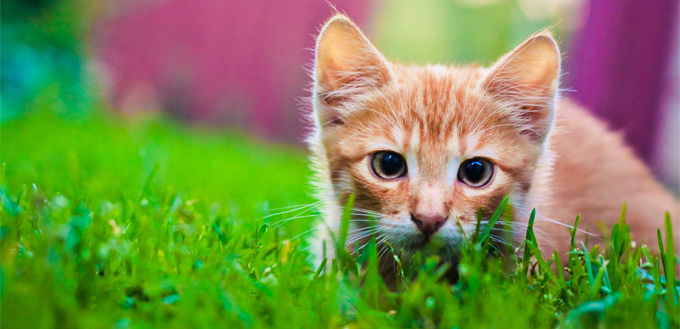
How to Train Them
Just because cats might enjoy training, doesn’t mean that it will be easy. It takes time and patience, so to help you out, here are some great tips to get you started:
- Like all animals, cats need to be in the right mood for training. This means that they must be patient, happy and hungry when you start a training session.
- Do only 5 to 10 minutes at a time. Otherwise, you risk exhausting your cat and giving them too many treats than is healthy.
- Always finish training on a good note, even if this means the sessions are on the short side. You don’t want to push your cat until it becomes uninterested.
- Positive reinforcement, which is offering rewards to encourage behaviour, is always better than negative reinforcement, which is using punishment to discourage behaviour. You don’t want to make your cat anxious or unhappy.
- Think carefully about the cues you choose. You can’t change them later, at least not easily, so don’t pick anything which is embarrassing in public, unclear, or overly complicated.
- Where possible, add in cue words after they have learnt to do the behaviour. Be patient and do one thing at a time. For example, when teaching your cat to sit, first make sure they know that sitting is a good behaviour to exhibit by rewarding them when they do it. Then start to say ‘sit’ after they sit and before giving them the treat so that they make a positive association.
- Try one trick at a time and be patient with it. You are not going to have your cat jumping through hoops straight away.
Clicker Training
Clicker training is a type of training for all pets. It involves making a clicking noise, using a commercially available clicker or, in a push, a pen, after your pet displays the desired behaviour so that your pet associates it with the imminent reward. It is helpful as it helps your pet to understand the process of training, such as the importance of cues. The idea is that eventually, you can lessen the number of treats you are using as the clicker becomes the reward instead.
How to use a clicker to train your cat to respond to their name:
- Sit in the middle of the room and call your cats name and hold out the treat.
- When they come to you, click the clicker and then give them the treat.
- Repeat a few times a day for a week or more. Hopefully, now your cat will associate the clicker with the ensuing reward and will have learnt to come to you when their name is called. A good test of this is to try it 10 times over a couple of days, if they manage at least 9 of those times, it’s a success!
- Now you can start with more specific training, such as calling her in from the garden. Work gradually and don’t do too much at once.
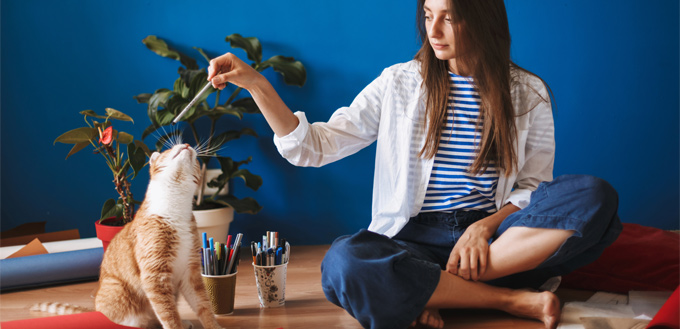
So, How Can It Improve Your Bond with Your Cat?
As we have already discussed, cats are intelligent and curious animals who like to earn their food. Intellectual stimulating activities, such as training, are very enjoyable for them and this means they will really appreciate you taking the time to work on these fun puzzles with them. The quality time that you spend together makes an often aloof creature love being with you, which will help you to learn more about their personality, motivations, likes and dislikes.
This is an integral part of what is called ‘cat enrichment’, which means encouraging your cat’s natural behaviours, such as their love of new things and mental stimulation. This can result in better health, better behaviour, and an overall happier life. Training with your cat generally improves your home life and family dynamics.
If you are interested in bonding further with your cat, you should consider brushing them more often as it is a very enjoyable activity for cats. Their eyes are also vital for building trust. Many cat lovers make the mistake of intimidating cats by staring at them. Some people suggest that this explains why cats are known to gravitate towards non-cat lovers, as it is these people make them feel least threatened. Try making casual eye contact with your cat in a relaxed state. If they return the gaze and then break it, they don’t see you as a threat. If they stare back, you need to be the one to break the gaze to show you are not a threat to them.
Fun Tricks to Try
Once you have them responding to their name, sitting, and any other basics that you want, you can try some slightly more complicated tricks. Here are a few step-by-step guides for a few of my favourite tricks.
Using the Toilet
This is a great trick that will help you save on the cost of litter and can make your home that little bit cleaner. Not to mention, it will give your friends a bit of a chuckle.
- Put the cat litter box near the toilet
- Gradually move it closer and closer to the toilet seat using a stool or steps if necessary
- Use a special litter that fits in the toilet as well as flushable litter, as the litter will spill into the toilet
- Remove the litter gradually so that your cat stops expecting it to be present
- Take away the litter box once they are comfortable using a litter box without any litter in it.
You May Also like: Cat Litter and Crystal Cat Litter
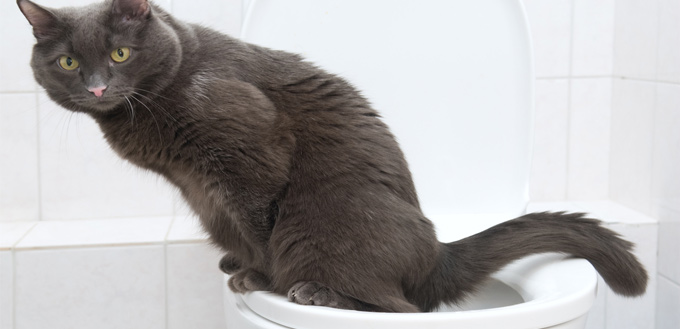
Shaking Hands
This is a very fun trick to show off to your friends. It is a common trick for pets that goes under a number of different names. Some get their pets to offer people their paw on the command ‘paw’, while others train their dog to respond to ‘high five!’. There are a number of creative and fun ways to interpret this trick, so have fun.
- Tap their hand while saying ‘shake’, or your preferred cue word.
- When they lift their paw, click and reward
- Repeat until your cat offers their hand in response to your cue word
- When this happens, click and reward
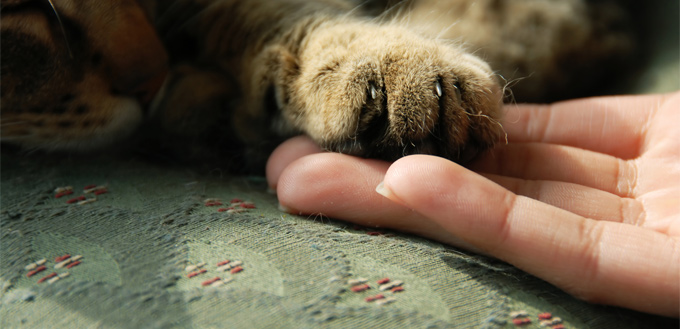
Begging for Food
Another good trick that you and your friends might enjoy is to get them to ‘beg’ for food. It is so sweet when they extend themselves and their little paws and look at you with their big eyes as if to go ‘pleeaaaaase’.
- Hold the treat above your cat’s head, but out of reach and say ‘beg’, or your preferred cue word
- When they stand on their hind legs and reach for it, click and reward
- Repeat until your cat begs without the treat visible
- When this happens, click and reward

Walk on a Leash
Walking on a leash is another common dog trait, but cats can do it too. This can be great if you want an enjoyable walk with your cat, like you do with your dog, and is particularly good if your cat is a house cat who deserves more outdoor exercise. Outdoor cats often have a better quality of life, but also can have shorter life spans due to the many dangers they encounter in the outside world. This is a good compromise which keeps them safe while allowing them to have a lot of fun.
- Buy a harness that attaches to their back, not their neck. This is important for their joints and bones
- Put the harness in a visible area of the house where your cat can investigate it and become used to it
- Drape it over them, but do not do it up or attach anything. Click, reward, and repeat.
- Start doing it up when you put it on them. Click, reward, and repeat.
- Gradually increase the amount of time your cat wears it. Click, reward, and repeat.
- Once they are comfortable with the harness, attach the leash, but don’t limit their movement. Click, reward and repeat.
- Start holding the leash. Click, reward, and repeat.
- Finally, when they are completely used to the leash, take them outside. Click, reward, and repeat.
Related Post: Cat Harness
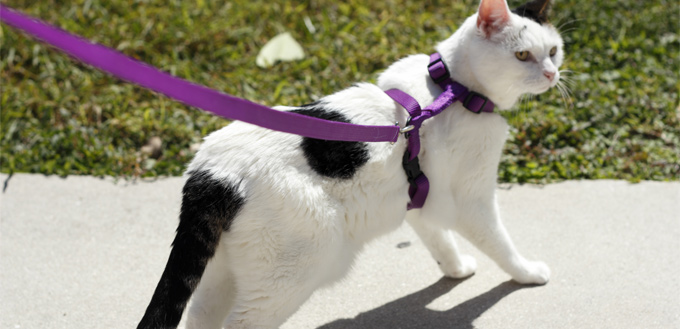
Fetch
Another common dog trick that cats can also do is playing ‘fetch’. This is another chance to bond, have fun, and get some exercise for your cat.
- Rub something delicious on their favourite toy. A good idea is to use the water that comes with a can of tuna as it won’t stain or make any lasting damage to the toy.
- Throw the toy out of reach
- If they pick it up, click, reward and repeat
- If they bring it towards you, click, reward and repeat
- When they are used to grabbing the toy and returning it to you, start to say ‘fetch’ or another command word as you throw it, click and reward.
You May Also Like: Cat Toys and Interactive Cat Toys
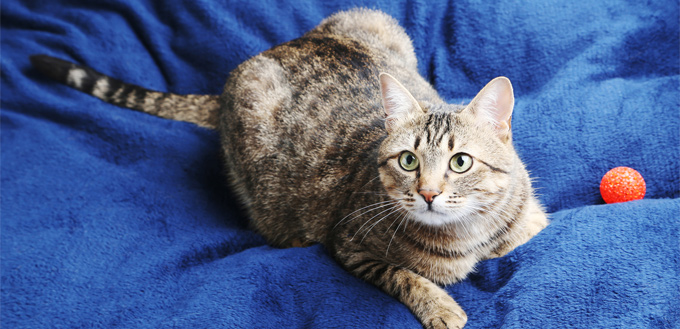
Jumping Through a Hoop
The most snazzy trick I know of is getting your cat to jump through a hoop for you. This is almost like a circus trick and will impress even the most cynical non-cat-lover. If you don’t have a hoop to hand, as most of us don’t, you can use your arms to make the hoop. This is a good idea if you want to be able to do the trick whenever wherever.
- If using a hoop, put it in a public area so your cat can become accustomed to it
- Start with training them to walk through the hoop while it is on the ground. Hold a treat on the other side of the hoop. Click, reward and repeat when they walk through it
- Raise the hoop an inch or less off the ground and try again. Click, reward, and repeat
- Raise the hoop another inch, and then another, and another until they must jump to get through it. If they don’t jump, don’t reward them, but you might want to lower it to remind them what they should be doing. Click, reward, and repeat
- Add a cue like ‘jump’. Say the cue before presenting the hoop and the reward, then click, reward and repeat when they jump through it.
- Start to broaden out the length of time between the cue and presenting the treat so that they start to jump through the hoop due to the cue, rather than the prospect of a treat. Eventually, you should be able to have the treat hidden in your pocket until you need to click, reward and repeat.
Sources:
- Melissa Schindler, What Kind of Sound Convinces Cats to Come to You?, The Nest







